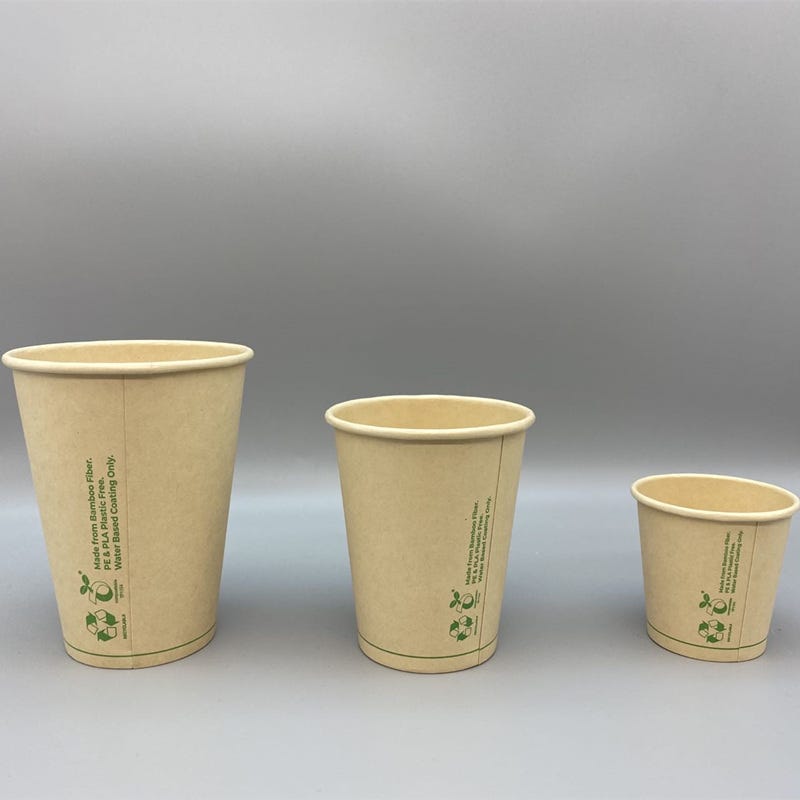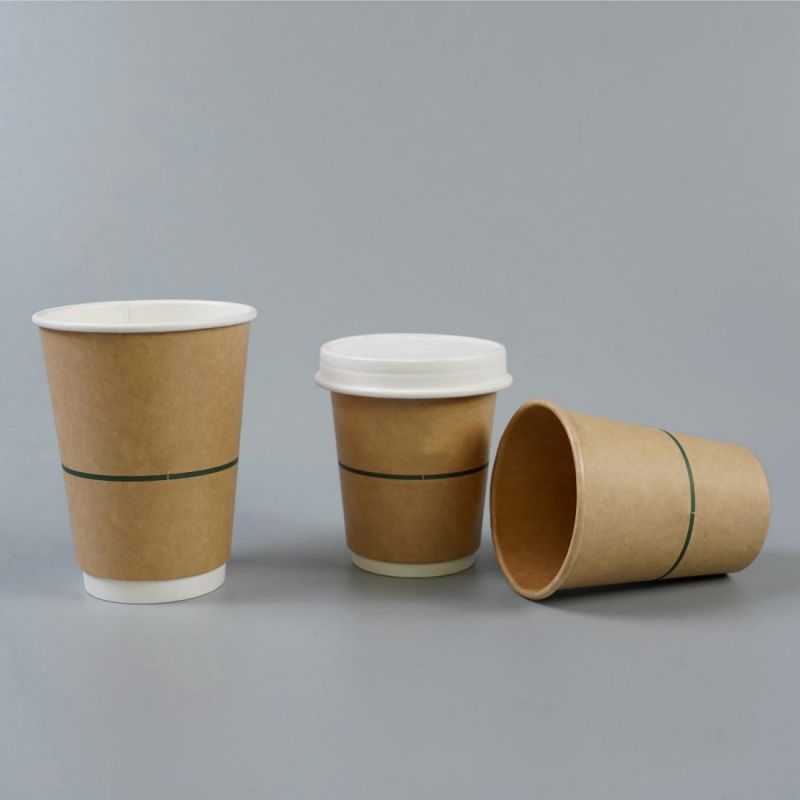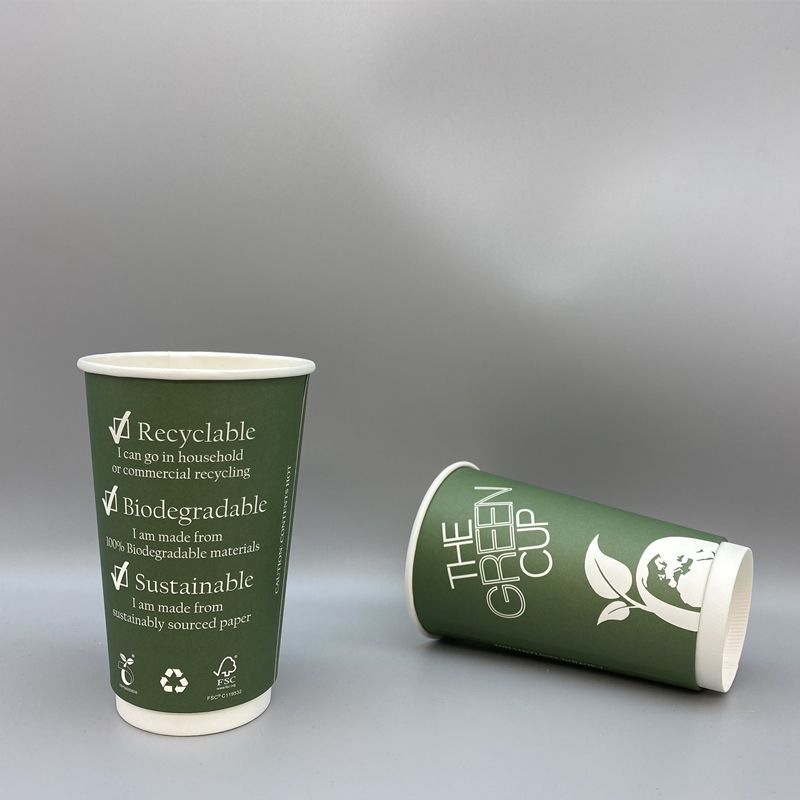Vilken är miljöpåverkan från PLA-bestruket papper?
Vad är PLA-bestruket papper och hur tillverkas det?
Polylactic Acid (PLA) är en bioplast som framställs av förnybara resurser som majsstärkelse eller sockerrör. Det används ofta som beläggning på pappersmuggar för att ge vattenbeständighet och hållbarhet. I det här avsnittet kommer vi att utforska PLA-beläggningsprocessen, dess produktion och jämföra den med andra vanliga beläggningar.
PLA-översikt
PLA, eller polymjölksyra, är en biologiskt nedbrytbar termoplast som framställs av förnybara resurser som majsstärkelse eller sockerrör. Det tillhör den familj av polymerer som kallas polyester. PLA blir alltmer populärt som ett hållbart alternativ till traditionella petroleumbaserade plaster i olika tillämpningar.
Material för PLA
Produktionen av PLA börjar med att mjölksyra utvinns från förnybara källor som majsstärkelse eller sockerrör. Mjölksyran polymeriseras sedan för att bilda PLA. De råvaror som används för att producera PLA är förnybara och har ett mindre koldioxidavtryck jämfört med fossilbränslebaserad plast.
Produktionsprocess
Den produktionsprocess tillverkningen av PLA består av flera steg. Först fermenteras råvarorna för att producera mjölksyra. Mjölksyran renas sedan och genomgår polymerisering för att bilda långa kedjor av polymerer, som sedan bearbetas till PLA-harts. PLA-hartset kan vidare omvandlas till olika former som beläggningar, filmer eller fibrer.
Ytbeläggningsprocess
För att applicera PLA på pappersprodukter som muggar används en beläggningsprocess. Beläggningen appliceras vanligtvis på pappersmuggens inre eller yttre yta för att ge vattenbeständighet och förbättra hållbarheten. Tekniker som extruderingsbeläggning eller laminering kan användas för att applicera PLA-beläggningen på papperssubstratet.
Jämförelse med andra ytbeläggningar
PLA-beläggningar skiljer sig på vissa punkter från andra vanliga beläggningar som polyeten (PE). Båda ger vattenbeständighet, men PE utvinns ur petroleum och är inte biologiskt nedbrytbart. PLA, å andra sidan, härrör från förnybara resurser och är biologiskt nedbrytbart under särskilda förhållanden. PLA-beläggningar har också ett mindre koldioxidavtryck jämfört med PE-beläggningar.
Produktion i industriell skala
PLA produktionen har ökat stadigt i takt med att efterfrågan på miljövänliga alternativ växer. Produktionsanläggningar i industriell skala har etablerats för att möta denna efterfrågan. I takt med att fler företag använder PLA som ytskikt i sina produkter har tillverknings- och skalningsprocesserna blivit effektivare.
Sammanfattningsvis, PLA-bestruket papper är ett hållbart alternativ till traditionella petroleumbaserade plaster. PLA utvinns ur förnybara resurser, har ett lägre koldioxidavtryck och är biologiskt nedbrytbart under särskilda förhållanden. Produktions- och beläggningsprocesserna har skalats upp för att möta den ökande efterfrågan på miljövänliga lösningar. Det är dock viktigt att ta hänsyn till tillgången på lämpliga avfallsanläggningar och de utmaningar som är förknippade med återvinning av PLA-belagda produkter.
Avsnitt 3: Hur fungerar PLA-bestruket papper i verkliga tillämpningar?
Bestruket papper med polymjölksyra (PLA) har blivit populärt i olika branscher på grund av sin miljövänliga natur och lovande prestanda. I det här avsnittet kommer vi att utforska de vanliga användningarna av PLA-belagt papper, dess barriäregenskaper, konsumentuppfattning, säkerhetscertifieringar, fallstudier, ekonomiska överväganden och framtida innovationer.
Vanliga tillämpningar
PLA-bestruket papper används inom en rad olika branscher. Ett av de vanligaste användningsområdena är livsmedelsförpackningar. PLA-belagt papper används ofta för att tillverka engångsbehållare och förpackningar för livsmedel, t.ex. takeaway-lådor, tallrikar och skålar. Det ger en skyddande barriär mot fukt och fett, vilket håller maten fräsch och förhindrar läckage.
Engångsmuggar är ett annat populärt användningsområde för PLA-belagt papper. Dessa muggar finns i kaféer, restauranger och evenemang. PLA-beläggningen säkerställer att muggarna förblir styva och läckfria, även när de innehåller varma drycker. Det erbjuder ett hållbart och miljövänligt alternativ till traditionella plastbelagda koppar.
Barriäregenskaper
…
Tabell 1: Jämförelse av hållbara ytbeläggningar
| Typ av beläggning | Vattenbeständighet | Biologisk nedbrytbarhet | Koldioxidavtryck |
|---|---|---|---|
| PLA-beläggningar | Ja | Ja | Lägre |
| Vattenbaserad | Ja | Ja | Lägre |
| Biobaserad | Ja | Ja | Lägre |
| Polyeten (PE) | Ja | Nej | Högre |
Tabell 2: Marknadens antagande av hållbara beläggningstekniker
| Typ av beläggning | Penetration av marknaden | Kommersiell bärkraft | Konsumenternas preferenser |
|---|---|---|---|
| PLA-beläggningar | Hög | Stark | Ökande |
| Vattenbaserad | Måttlig | Växande | Ökande |
| Biobaserad | Låg | Framväxande | Ökande |
| Polyeten (PE) | Hög | Stark | Minskande |
Avsnitt 5: Slutsats
- PLA-belagt papper är en lovande lösning för att minska miljöpåverkan från pappersprodukter för engångsbruk.
- Den biologiska nedbrytbarheten och användningen av förnybara resurser gör PLA-beläggningar till ett attraktivt alternativ till traditionella petroleumbaserade beläggningar.
- Utmaningar i industriella komposteringsanläggningar och återvinningssystem utgör dock begränsningar för en utbredd användning och korrekt avfallshantering.
- Pågående forskning och innovation inom hållbara ytbehandlingar kommer att fortsätta driva utvecklingen framåt och erbjuda mer miljövänliga alternativ i framtiden.
Vanliga frågor om PLA-belagt pappers miljöpåverkan
Vad är PLA-belagt papper och hur tillverkas det?
PLA-bestruket papper är en biologiskt nedbrytbar pappersprodukt som är bestruken med polymjölksyra (PLA), som framställs av förnybara resurser som majsstärkelse eller sockerrör.
Hur står sig PLA-belagt papper jämfört med andra miljövänliga beläggningar?
PLA-belagt papper står sig väl i jämförelse med andra miljövänliga beläggningar tack vare sin biologiska nedbrytbarhet, förnybara resursbas och lägre koldioxidavtryck.
Vilka är de vanligaste användningsområdena för PLA-belagt papper?
Vanliga användningsområden för PLA-belagt papper är engångsbehållare för livsmedel, förpackningar, tallrikar, skålar och muggar, särskilt inom livsmedelsförpacknings- och dryckesindustrin.
Vilka certifieringar garanterar säkerheten för PLA-belagt papper?
PLAs säkerhet vid kontakt med livsmedel är certifierad av amerikanska Food and Drug Administration (FDA) och internationella standarder som europeiska DIN EN 13432 och amerikanska Biodegradable Products Institute (BPI).
Vilka ekonomiska överväganden finns det för att använda PLA-belagt papper?
Ekonomiska överväganden för användning av PLA-belagt papper inkluderar dess generellt högre kostnad jämfört med traditionella plaster, även om ökande efterfrågan och produktionsframsteg förväntas minska kostnaderna över tiden.
PLA bestruket papper är tillverkad av förnybara källor som majsstärkelse. Det är biologiskt nedbrytbart och miljövänligt, men innebär vissa utmaningar när det gäller återvinning. Även om det finns potential, t.ex. i livsmedelsförpackningar, behövs det fortfarande mer acceptans och innovation. PLA-belagt papper är en växande lösning för mer hållbara produkter.





